1. Whale Watching, Reykjavik
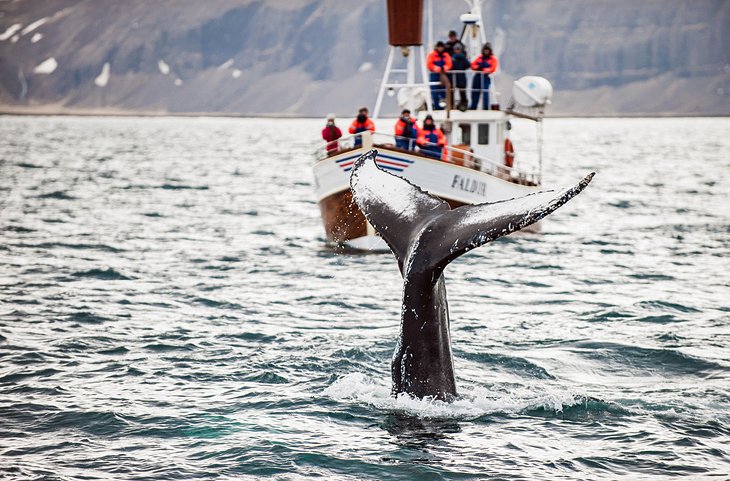
No matter when you plan to travel, whale watching happens year-round, although summer is the most popular time to see these gentle giants. During the warmer months, trips run day and night, including whale watching in the midnight sun.
Tour operators say there's an 80-95 percent chance of seeing these magnificent creatures, depending on the time of year. Best of all, surfacing often happens right near the boats, so you may well enjoy a ringside seat for one of nature's most awe-inspiring spectacles.
Other ocean-going tours are also available, such as bird-watching and island visits. Tours are convenient since there are several types available, and they depart from Reykjavik's Old Harbor. Stop for a dinner of fresh cod after you return in one of the many small, rustic restaurants located in the harbor area.
Address: Ægisgardur 5, Reykjavik's Old Harbor
2. Soak in the Blue Lagoon, Grindavík
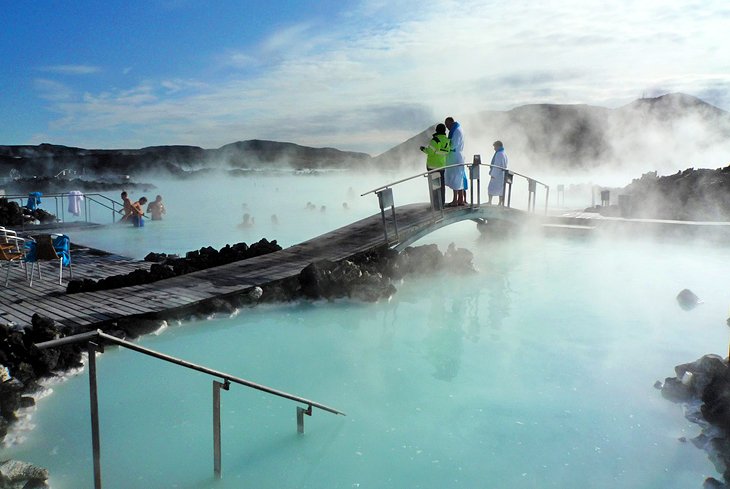
Just 40 minutes' drive from Reykjavík, this most iconic of geothermal spas is a must-see tourist attraction. Here, you'll find natural bathing in pale blue water in the shadow of a power station.
An entire Blue Lagoon industry has grown around this attraction since it first became a hit with locals in 1976. The water from the underground hot springs reaches 37-39 degrees Celsius and is said to be highly beneficial for both health and skin.
If the die-hard Icelanders are anything to go by, don't knock the theory. Aside from bathing in a unique setting, there's a shop selling skincare products, a range of spa treatments, and places to eat and drink. Don't visit Iceland without coming here.
Rub on a mask of natural mud in minerals from one of the tubs located on the edges of the lagoon. For the ultimate relaxing visit, you can stay at one of the two hotels at the Blue Lagoon and add on a day at the Retreat Spa.
It is easy to book a bus trip to the Blue Lagoon from Reykjavik, but if you want to add an extra element of Iceland adventure, you can book a day trip on an ATV that will have you drive there over lava rock paths and take you back by coach to your hotel.
Address: Norðurljósavegur 9, 240 Grindavík
3. Watch Spectacular Geysers
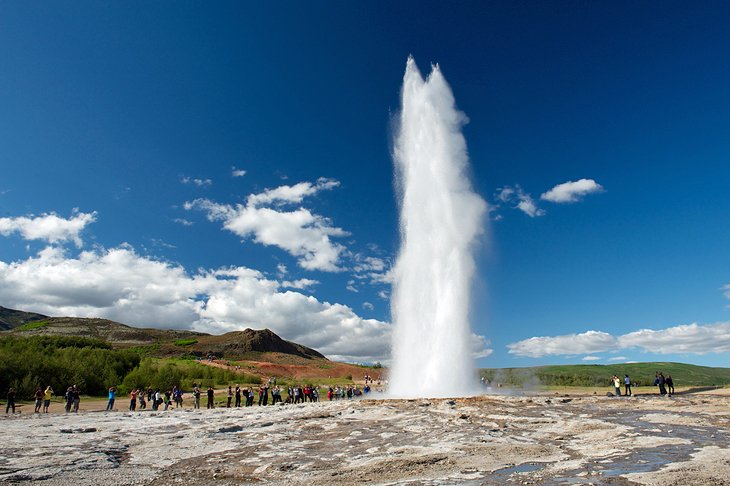
An easy 50-minute drive from Reykjavik, Strokkur Geysir (after which all geysers are named) is the most popular fountain geyser in the country and famed throughout the world. This highly active hot spring area lies in the southwest of Iceland beside the Hvítá River and is a favorite stop along what's known as the Golden Circle.
Boiling mud pits and around 100 other smaller exploding geysers are waiting to be explored here. Every few minutes, Strokkur shoots water 30 meters into the air. Visit the Geysir Center for exhibits and informative presentations year-round.
A memorable experience is digging up Geysir or "hot spring" bread, rye bread that has been baking underground for 24 hours. Visitors can also help a chef boil eggs in a hot spring to accompany the bread. One popular day tour to the area is the Golden Circle Classic Day Trip from Reykjavik, which has several stops and can ensure you get the iconic geyser photo from your trip.
4. The Northern Lights, Aurora Borealis
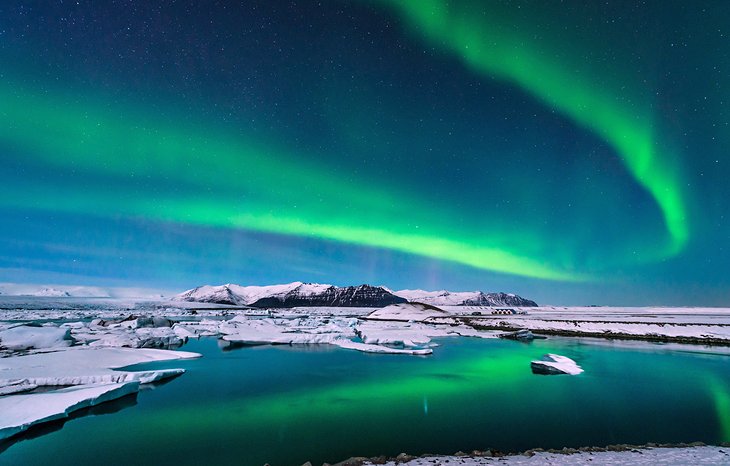
The northern Lights, or Aurora Borealis, are among the most popular tourist attractions in Iceland. Auroras are linked to solar wind, a flow of ions radiating from the sun.
These particles become ensnared in the earth's magnetic field and collide with atmospheric molecules, causing bursts of energy, which appear as large circles around the poles. This spectacular natural light show is best admired in remote places and is particularly impressive at times of increased solar activity.
Since the appearance of the Northern Lights is unpredictable, most hotels and lodging operators can provide you with nightly predictions before you go to bed and add you to an overnight call list.
They will call your room if the lights appear, as they may only be visible for a short window of time. For one of the most optimal opportunities to experience the Northern Lights you can take a tour like the Northern Lights Night Tour from Reykjavik, which takes you to the remote countryside for the best chance to see this natural wonder.
5. Hike in Landmannalaugar Nature Reserve
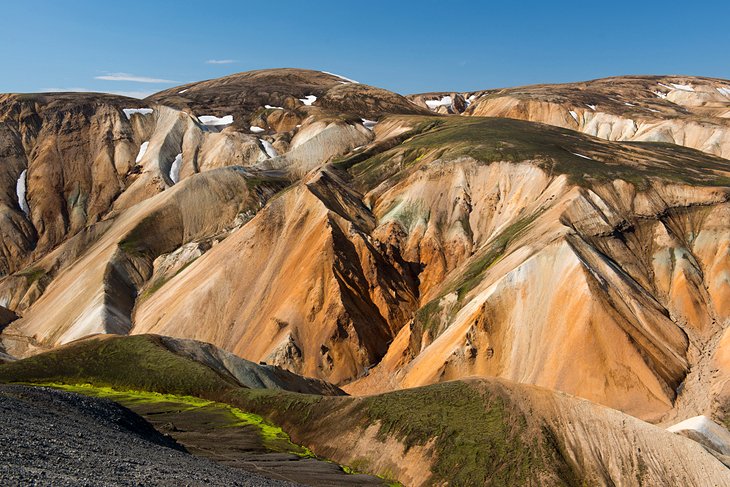
In the south of Iceland, 180 kilometers from Reykjavik, is Landmannalaugar National Park, one of Iceland's most popular tourist destinations. The main features of this mystical landscape are the multihued rhyolite mountains, Hekla volcano, and extensive lava fields.
Hiking and horse riding are popular things to do here, and hikes range from a couple of hours to several days. You can visit from June to late September, after which the road is closed. A mountain lodge (Landmannalaugar Hut) with basic facilities accommodates 75 people. Expect raw nature, rugged scenery, and utterly spectacular views.
6. Maelifell Volcano & Myrdalsjökull Glacier Park
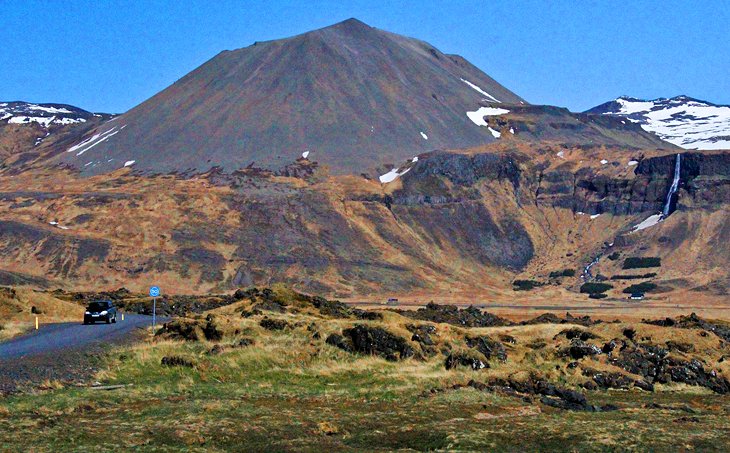
South of Landmannalaugar lies Myrdalsjökull Glacier Park, which for safety reasons can only be visited during summer. Large amounts of rain soak the area, particularly in winter, when roads can be severely damaged. Maelifell volcano is the undisputed jewel-in-the-crown of this wild, rugged glacial landscape.
The perfect cone shape gives Maelifell the look of a classic volcano, however during the warm season, a lavish green covering of moss gives it a surreal, otherworldly appearance. The park is full of volcanoes, hot springs, and other remarkable sites. To the west of Myrdalsjökull is a smaller glacier, Eyjafjallajökull (Island Mountain Glacier). A popular and thrilling way to explore is by snowmobile.
7. Explore the Skaftafell Ice Cave, Vatnajökull National Park
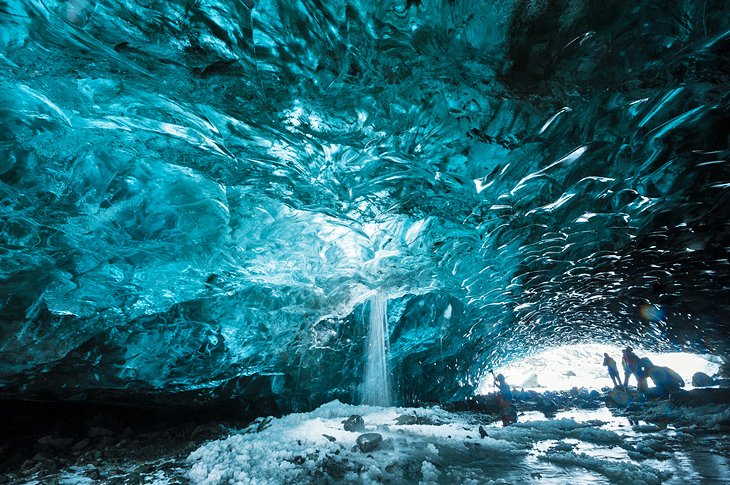
In the south of the country, Vatnajökull National Park is a land of glaciers and magnificent ice caves, which attract adventurers from across the globe. The vast national park (one of three in Iceland) is divided into four sections and consists of Vatnajökull glacier and its surroundings.
You'll find a number of visitor centers; those in Skaftafell Ice Cave and Höfn are open year-round, while Skriðuklaustur and Jökulsárgljúfur are closed in winter. The best time to visit Skaftafell Ice Cave is during winter after heavy rain has washed the top layer of the glacier away.
If seen at the right time, the cave is bathed in spectacular blue light. Group visits to all areas can be arranged off-season. If you are in healthy shape, you might consider doing a glacial trek with an experienced guide. The treks get you on the ice for an unforgettable experience to see glacial cracks and caves and even drink fresh water from small pools on the surface.
8. Askja Caldera
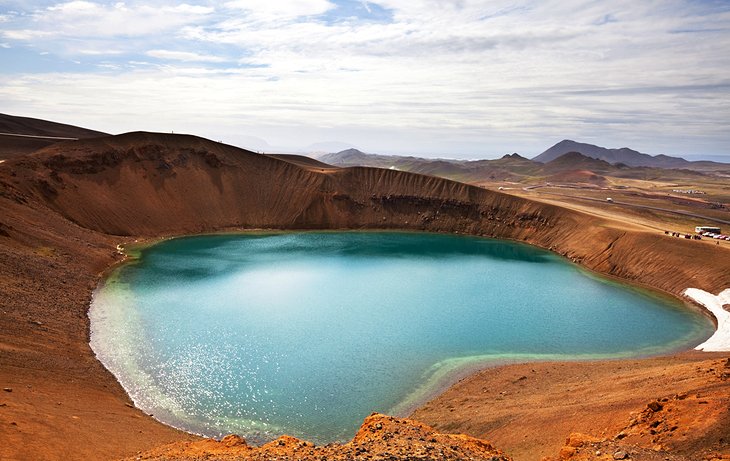
In the northern region of Vatnajökull National Park, Askja caldera and geothermal pool in the Dyngjufjöll Mountains is not one for the faint-hearted. However, if you'd like to say you've taken a dip in a live volcano, then this is for you.
Askja is an impressive 50 square kilometers in size. The surrounding mountain range was formed during volcanic activity, and Askja was partly created by an eruption of burning ash that collapsed the roof of the central volcano's magma chamber.
The water in Viti, the geothermal pool and volcanic crater, is generally around 30 degrees Celsius. A word of warning, the banks can be very slippery, particularly in wet weather.
9. Dettifoss Waterfall
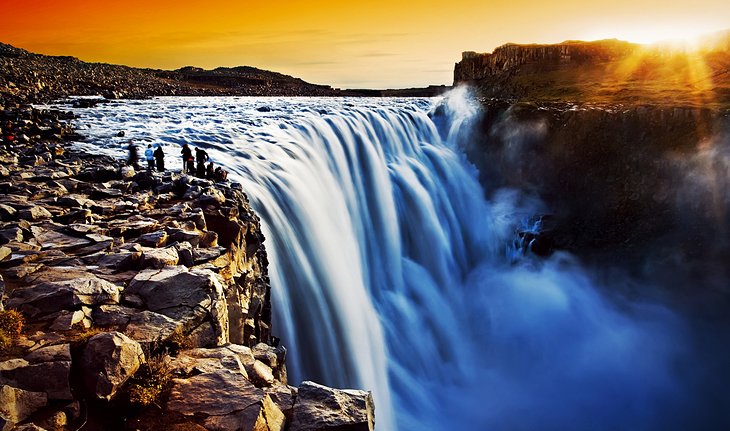
Dettifoss, in the north of Vatnajökull National Park, truly is a breathtaking example of the raw power of nature. Plunging 45 meters and with a width of 100 meters, it's said to be the most powerful waterfall in Europe.
Generally, it's best to approach on the east side of the River Jökulsa, where the road is better. Along easy paths from Dettifoss, Selfoss is a smaller waterfall around one kilometer upstream with a drop of around 10 meters. Below Dettifoss, the Hafragilsfoss waterfall tumbles 27 meters into a steep canyon. It's more advisable to drive than walk to Hafragilsfoss.
10. Kirkjufell Mountain, Grundarfjördur
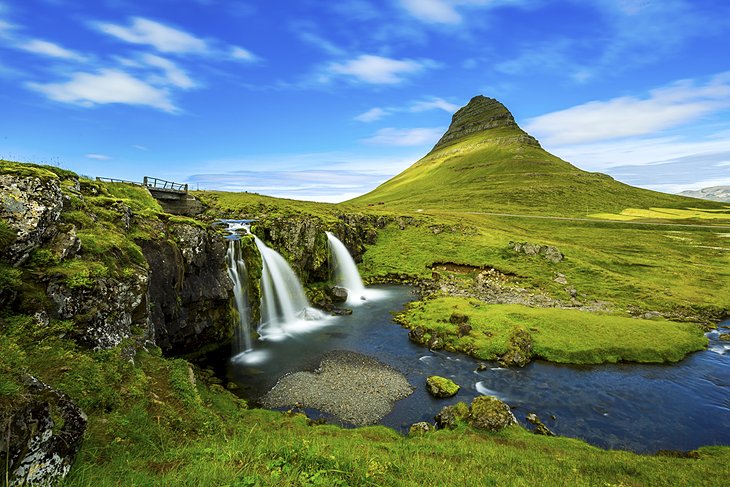
Around 2.5 hours' drive northwest of Reykjavik is the small town of Grundarfjördur, a charming fishing village centrally located on the north coast of Snaefellsnes peninsula. The town lies in a picturesque fjord, surrounded by mountains, with Mt. Kirkjufell looming as a striking landmark.
Dotted about the surroundings, you'll discover small streams and waterfalls. During winter, Kirkjufell is a great place to watch the awe-inspiring Northern Lights. Eyrbyggja Heritage Centre holds exhibitions on Grundarfjördur's seafaring history and is the information center for the whole peninsula.
11. Ride to the Top of Hallgrímskirkja
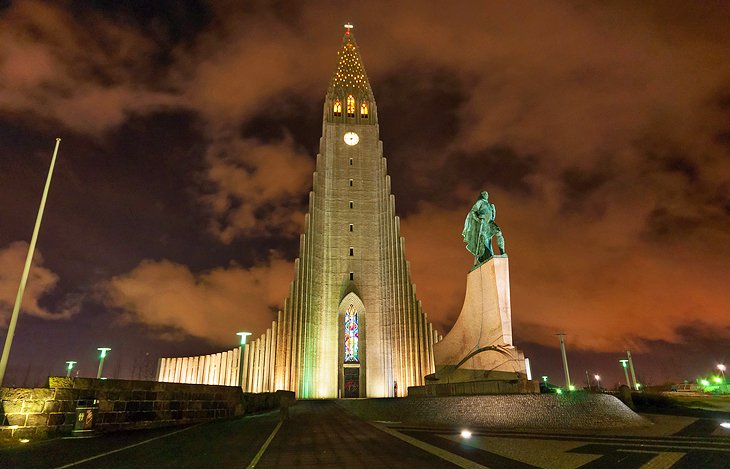
A Reykjavik modernist icon, this visually striking church is one of Iceland's top attractions, and when you see it, you'll understand why. It's the tallest and most recognizable building in the country.
The Black Falls (a basalt rock formation), which is one of Iceland's natural wonders, inspired the architectural design. A climb to the top of the 73-meter-high tower is particularly rewarding. Here, you'll be treated to spectacular views across the city and surrounding landscape.
At the front of the church is a statue of Icelander Leifur Eiriksson ("Leif the Lucky"), the first European to discover America around AD 1,000. It seems he beat Christopher Columbus by around 500 years or so. For a small fee, you can take the elevator to the top and get the best panoramic view of Rejkjavik.
Address: Hallgrímstorg 1 101, Reykjavik
12. Gullfoss Waterfall
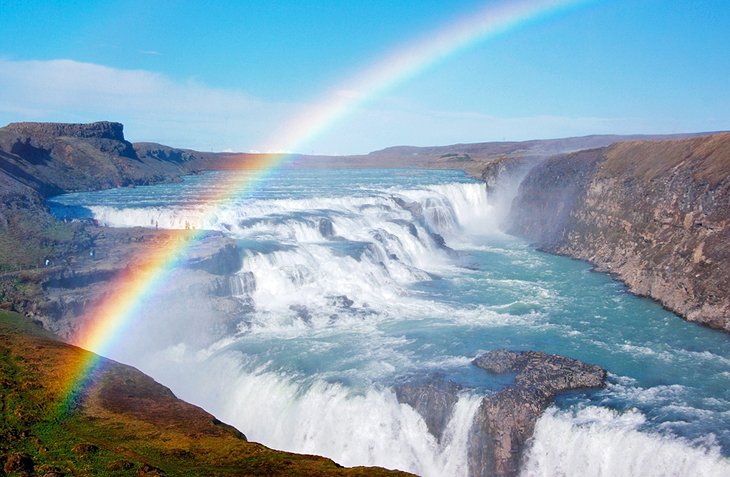
Magnificent Gullfoss Waterfall lies around a 90-minute drive west of Reykjavik. The river Hvítá plummets into a canyon, which forms three step terraces, creating a powerful torrent. Gullfoss encompasses two cascades; the upper one drops 11 meters, while the lower one cascades about 21 meters.
Torrents of water flow over Gullfoss at an average rate of 109 cubic meters per second, although heavy floods have recorded an astonishing rate of nearly twenty times that. A word of warning: there are no rails or barriers, just a spine-tingling spectacle to enjoy amid surroundings as nature intended.
13. Hiking at Mount Esja
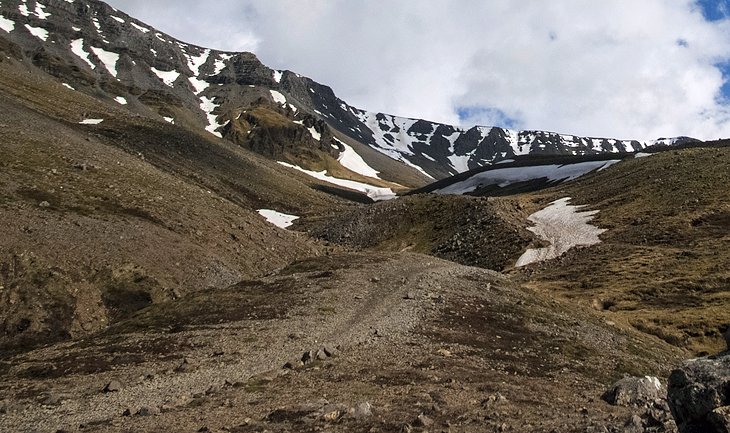
A 30-minute easterly drive from Reykjavik brings you to Mount Esja in Kjalarnes. The mountain is 914 meters high and very popular with hikers. Even for the inexperienced climber it's a relatively easy hike. There are terrific views of Reykjavik and the surrounding landscape and ocean.
You can take several routes to the summit depending on energy levels and how much time you have. You can get to the main starting point at Mount Esja by a 10-minute bus ride on public transportation that leaves out of the Hlemmur main station towards Artun. Check bus schedules and times before your visit.
15. Lake Myvatn & Nature Reserve
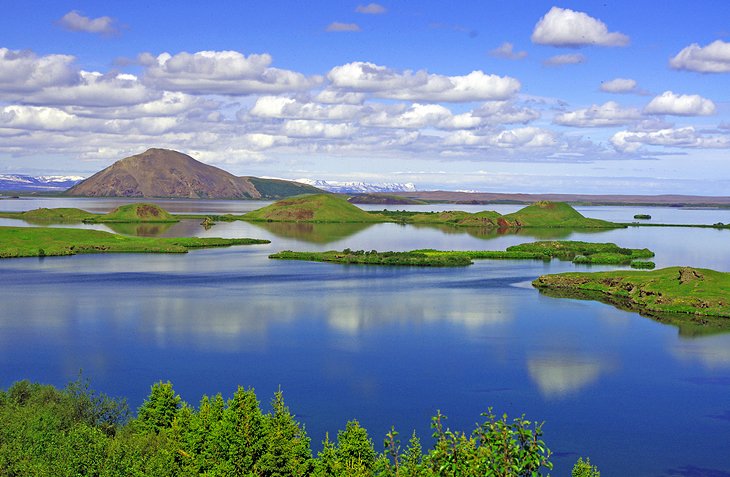
A little over an hour's easterly drive from Akureyri is Myvatn in northern Iceland. It is a lake district famous for its wealth of birdlife, rich fauna, and large shallow body of water. It's estimated that the area was formed around 2,500 years ago by a gigantic lava eruption.
Today, the surroundings are volcanically active, with an eruption occurring as recently as the mid-1980s. Bubbling clay pits, sulphuric fumes, and lava formations all form part of this unique landscape, which is still in flux.
One of the most interesting scenic features of Myvatn is the rootless vents formed by the volcanic eruption. While the landforms resemble craters, they did not have a lava flow, but the volcanic activity still resulted in their creation, adding to a stunning and unique appearance around the lake.
The name Myvatn literally means "midge-water," a reference to the prolific midges here, especially during summer, so be sure to pack some insect repellent. The area is also a bird-watcher's paradise.